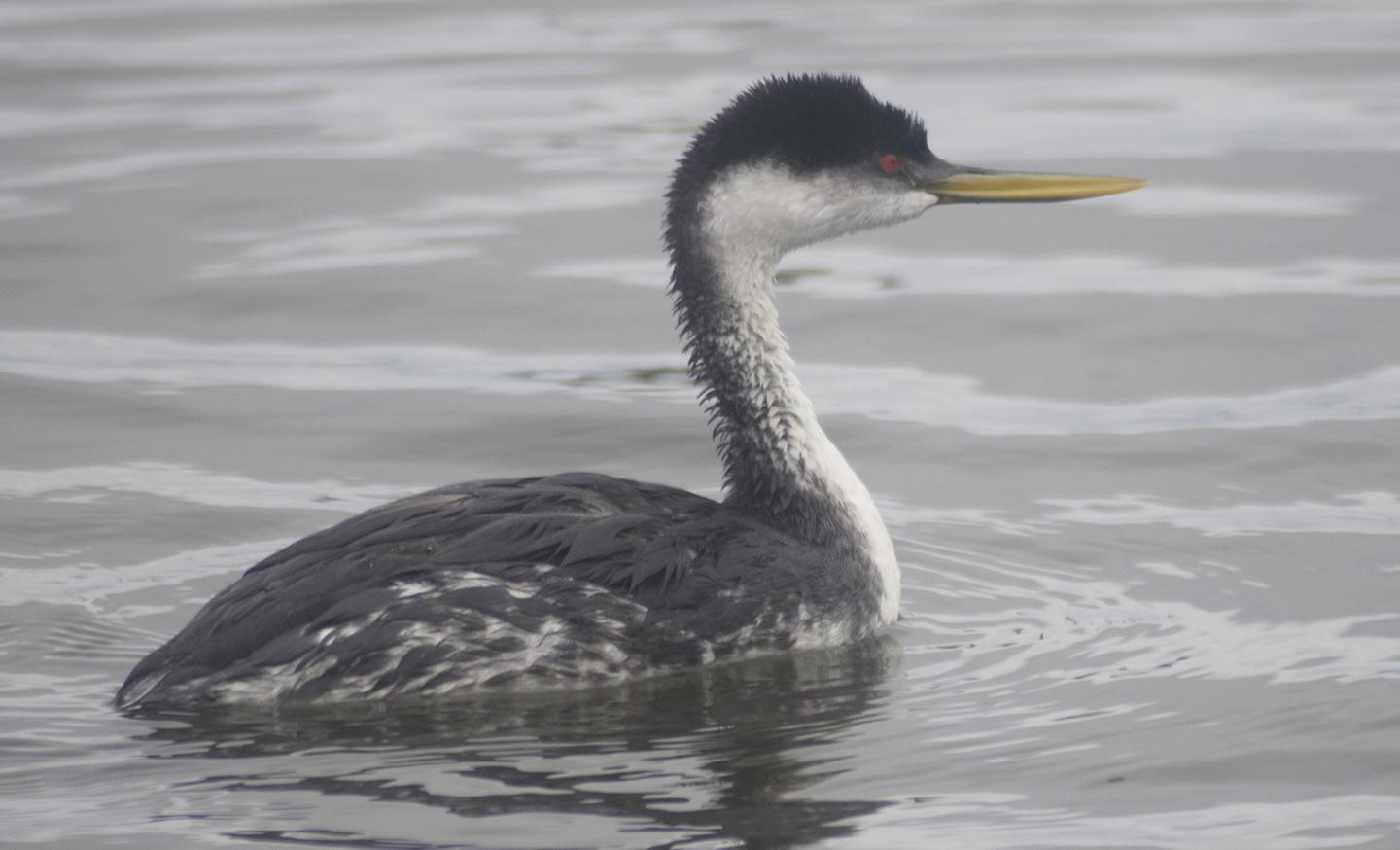Those of you readers of a certain age may remember Disney did some really cool movies for TV about nature. I remember my mother laughing as Western Grebes rose up and literally ran across the water, pairs side-by-side, wings held stiffly back, necks arched, bills thrust upward and water flying behind in elaborate courtship dances. If you never saw it, Google Western Grebe and watch their videos. It is highly entertaining stuff.
General Description: Western Grebes are a large black, sooty and white water-bird with a streamlined body, long neck, narrow bill and yellowish legs set far to the back of their underside. Females are smaller with shorter bills. These birds range from 21.7 to 29.5 inches in length, with wing spans of 31 to 34 inches and weigh in at about 28 to 63 ounces. Big size differences make it easy to tell males from females. The eyes are dark in juvenile birds, changing to red during their first year. The black upper half of their head extends below the eyes and displaying birds show a distinct crest of black feathers.
Habitat: In winter, Western Grebes can be found on the open water of the Pacific Coast, estuaries and saltwater or brackish marshes. In summer they move to freshwater ponds and lakes east of the mountains, from California north and east to south-central Canada.
Behavior: Grebes are highly social birds, wintering in large flocks and nesting in colonies. They spend nearly all of their time on the water, including courtship and breeding. They often use their bill to spear prey underwater but eat on the surface.
Diet: Primarily fish, in all seasons, but they also eat bottom-dwelling crustaceans and worms.
Nesting: After their elaborate courtship, both sexes build a nest on top of heaps of plant material in a freshwater marsh and connected to emergent plants, or on a submerged snag. Both parents incubate three to four eggs for about 24 days. The newly hatched young leave the nest almost immediately and ride on the backs of their parents. Both parents feed the young which are usually under close parental care for about 8 weeks.
Migration: Following the post-breeding/nesting cycle, adult birds migrate to a molting site where they complete a wing molt. Birds from the northern part of the breeding range migrate at night out to the Pacific Coast in early September to early November. The core wintering area in the most recent studies (2013) shows larger concentrations of wintering birds are off northern California, but that may have changed with the warming offshore waters dispersing the small fish the grebes eat. Northern/Spring migration begins in early April through mid-May along the Pacific coast.
Conservation Status: Two factors influence the vulnerability of this bird; human disturbance while on breeding grounds (boats too close to nests flush parents, leaving eggs open to gulls and swimming mammals), and human-caused pollutants such as oil spills and poisons meant to kill carp. The Western Grebe is not on the 2014 State of the Birds Watch List.
When and Where to Find in Grays Harbor: Western Grebes can be found all along the coast from September through May. If you want to see them up close and personal, head for the beaches during heavy winds and surf. They are very vulnerable during stormy weather, unable to feed or cope with the big waves. They lose their protective oils, come ashore, fall victim to hypothermia and die. I have made it a regular job to patrol the beach with my box and gloves following a storm to collect many of these grounded birds and deliver them to the calmer (and a bit warmer) waters of the marina. There they can find fish to eat and calm waters to regain their body oils to protect themselves from the cold. Just watch out for those sharp bills!


